Modern man has the tendency to think of himself as more evolved and cleverer than his predecessors, but things aren’t always what they seem. Perusing the pages of history books and visiting museums can lend a bit of perspective with regard to ingenuity over the ages. Take ancient acrolith sculpture, of which several noteworthy examples still exist, amongst them, the Apollo of Krimisa, one of many ancient Greek and Roman sculptures at the archeological museum of Reggio Calabria.
WHAT IS AN ACROLITH?
An acrolith is a type of sculpture popular in Classical Antiquity of both the Greeks and the Romans, and consists of a combination of stone and other materials to form the whole. For example, the head and other exposed parts of the body, such as the hands and feet would be carved in marble, while a wooden frame covered by cloth and even gilded materials would make up the rest of the image’s figure.
For the visitor to Italy, the best-known acrolith is the Colossus of Constantine (c. 312-324 AD), whose gargantuan parts are on display in the courtyard of the Palazzo dei Conservatori at the Capitoline Museums. The Roman emperor is a particularly large example, as the sculpture of the seated Constantine the Great would have measured over forty feet high! He was so large that the body’s supporting framework would probably have had a brick core.
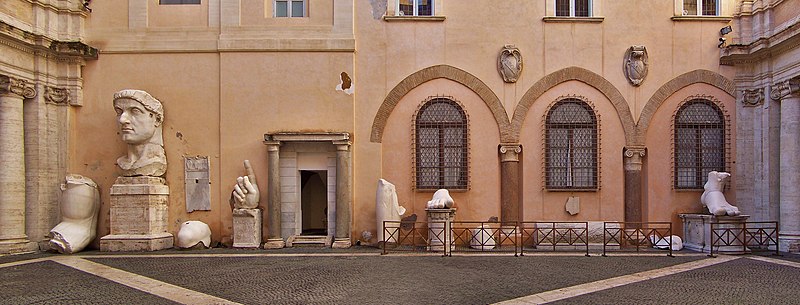
Parts of the acrolith sculpture, the Colossus of Constantine (c. 312-324 AD), Capitoline Museums, Rome [Courtesy of The Cosmonaut, Wikimedia Creative Commons, Statua colossale di Costantino I]
Other lovely acroliths can be found in the Archeological Museum of Aidone in Enna, Sicily. The following photo shows two goddesses, most likely Demeter and Kore, whose marble extremities were created in the 6thcentury BC and have been arranged for display in the museum by contemporary stylist Marella Ferrera.
APOLLO OF ANCIENT KRIMISA
The Apollo acrolith comes from a temple dedicated to this important god of music, poetry and archery in ancient Krimisa. This city of Greater Greece was founded in the 7thcentury BC along the Ionian Sea between Sibari and Crotone, where Cirò, Calabria is located today. (You may be familiar with the name in association with its excellent DOC wine.)
The marble parts of the statue were discovered in the 1920s together with other objects relating to the sanctuary of Apollo, as well as the remains of a Doric temple. The artifacts are divided between the museums in Cirò Marina, Crotone, and Reggio Calabria, where the most important pieces are housed.
Carved from white Grecian marble in approximately 440-430 BC, the acrolith sculpture would have been positioned in the inner chamber of the temple. Today, a reconstruction of the slightly larger-than-life statue complete with wooden frame and a flowing cloth garment is on display at the archeological museum in Reggio Calabria, together with the original head, feet and partially broken left hand.
DETAILS OF THE APOLLO ACROLITH
The beautifully proportioned head of Apollo, with its well-formed mouth, nose and eye sockets, gives the impression that this Apollo knew how to appreciate the area’s fine wine. Upon closer inspection of the bare, marble skull, one can see the holes and grooved lines that would have served to fasten the statue’s hair: a wig in bronze, or perhaps in more flexible gold leaf, or even a gilded stucco hairpiece held in place by a little wooden structure. Bronze foil eyelashes would have been inserted in the eye openings, which would have been realistically rendered with composite materials.
Holes in the marble feet indicate the places to fasten the sandal’s laces, perhaps also of a resistant precious metal. Sadly, just a damaged ring finger remains on the lone hand. Some experts hypothesize that this Apollo may have been strumming an ancient cithara, a stringed musical instrument similar to the lyre. Maybe he wore out his fingers with his enthusiasm.
Interestingly, a finely chiseled bronze wig (474-450 BC) was also found in the Apollo sanctuary in Krimisa and is thought to be a votive offering to the god.
BEGUILING ACROLITH SCULPTURES
I find the acrolith statues fascinating. And with sumptuous fabrics of the latest styles artistically draped over structures that were padded and shaped to the perfect human form, the acrolith sculptures must have cut eminently striking figures.
Meant to fool? I don’t think so. It seems to me they were meant to enchant. As even without his wig, I was inspired to snap a selfie with the reconstructed Apollo of ancient Krimisa.
Read more about Southern Italy – everything from ancient history to contemporary society with interesting places to visit, encounters with locals and lots of food – in my two books Calabria: The Other Italy and Basilicata: Authentic Italy.
“Recommended to readers who appreciate all things Italian” – Library Journal
“Like” Basilicata Facebook page, Calabria: The Other Italy’s Facebook page and follow me on Karen’s Instagram and Karen’s Twitter for beautiful pictures and information.
Sign up below to receive the next blog post directly to your email for free.
CALABRIA: The Other Italy and BASILICATA: Authentic Italy make great gifts!

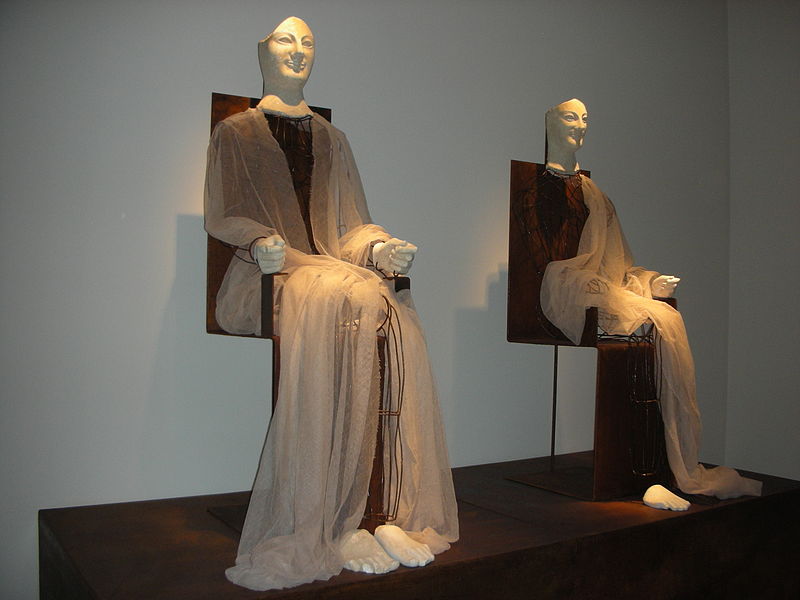
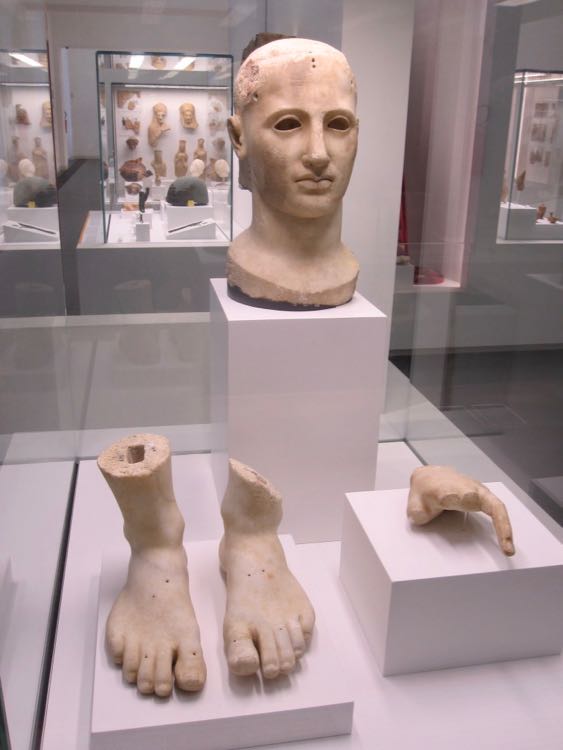
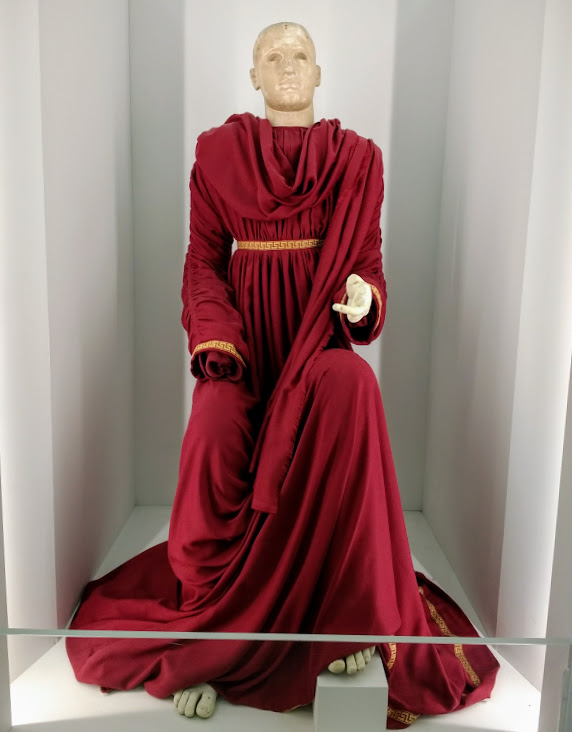
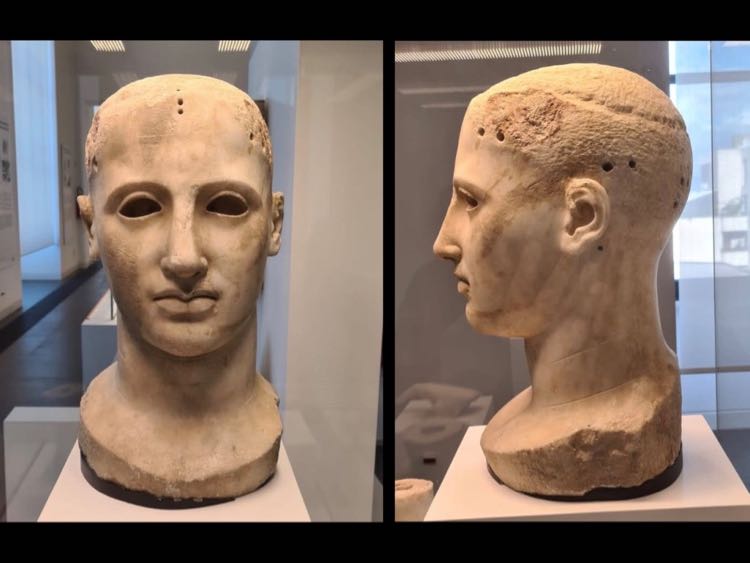
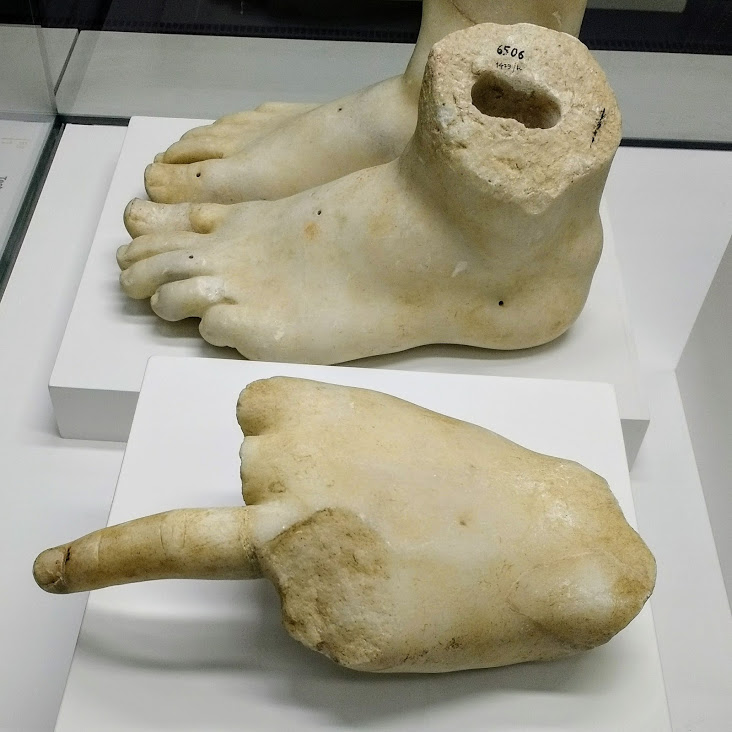
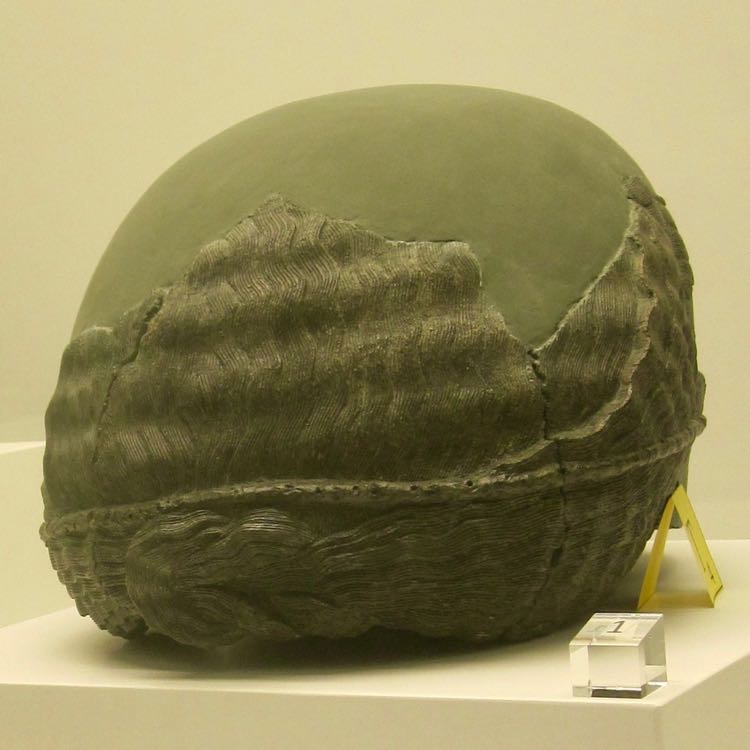
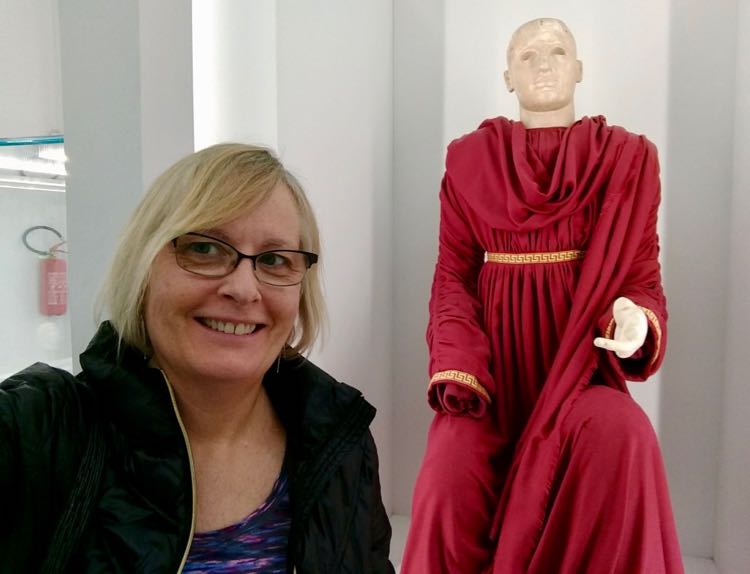

Comments 2
Fascinating post Karen! I haven’t seen these…yet.
Particularly like the “Acrolith Sculptures of Greek Goddesses” and the cloth makes the statue come to life.
Author
Thanks, and I agree. The sheer fabric gives the two ladies quite an elegant look.